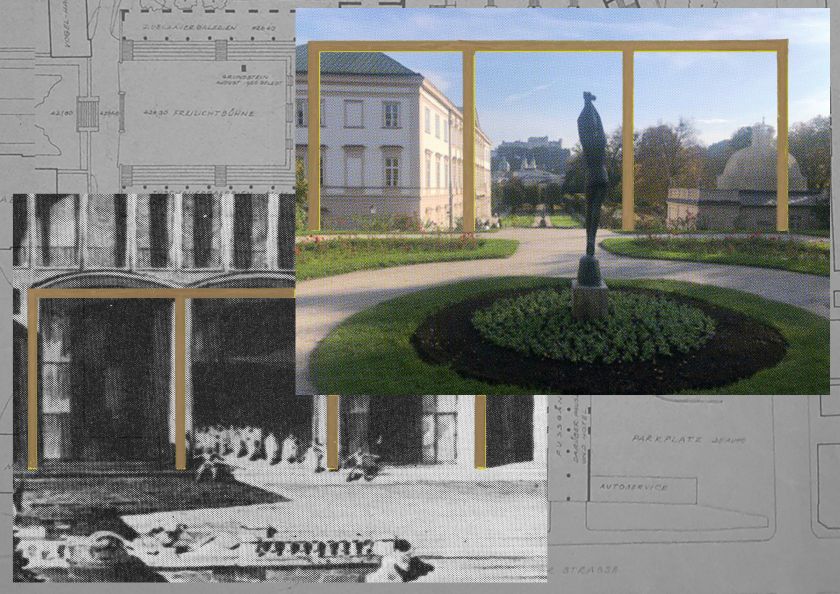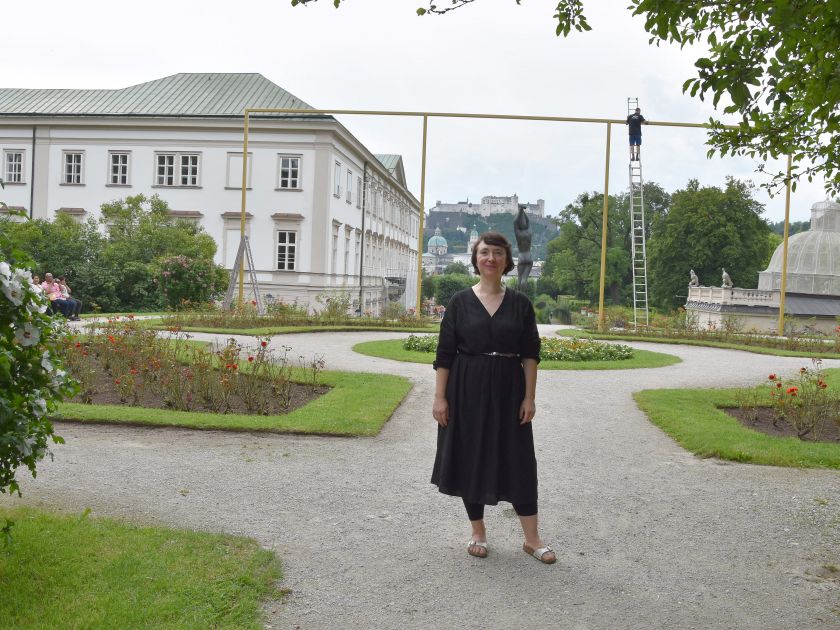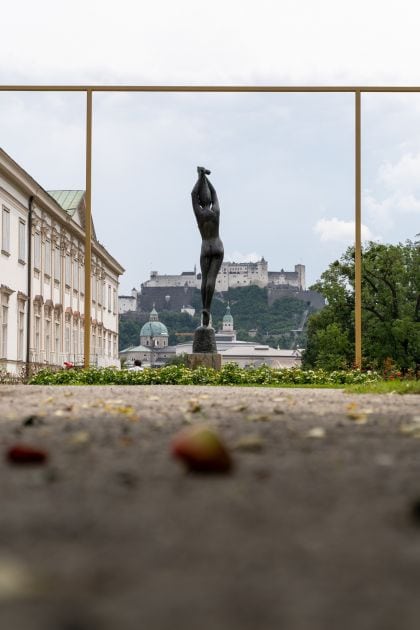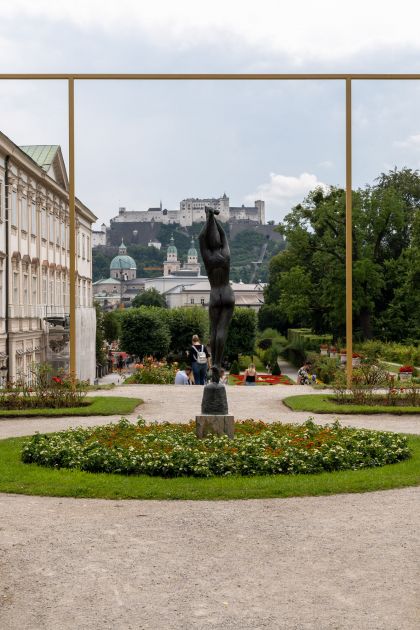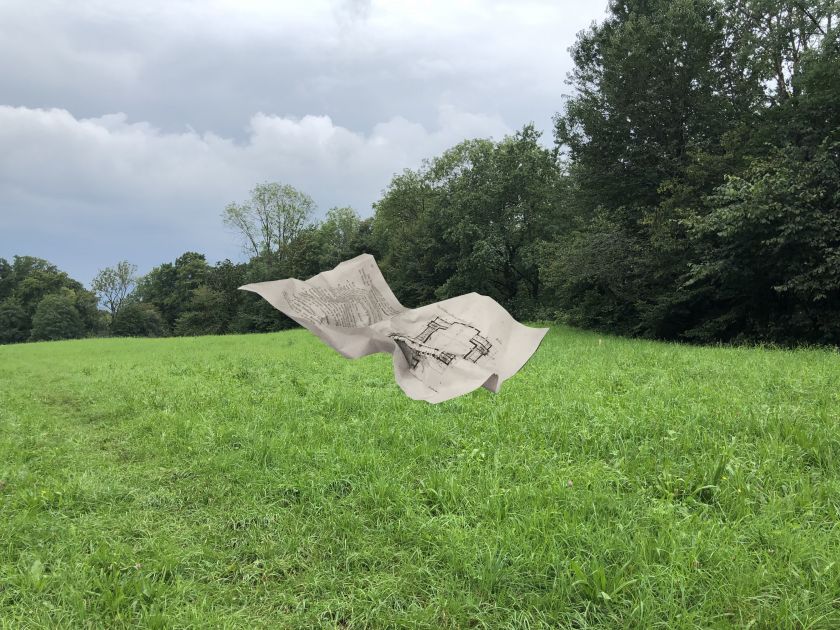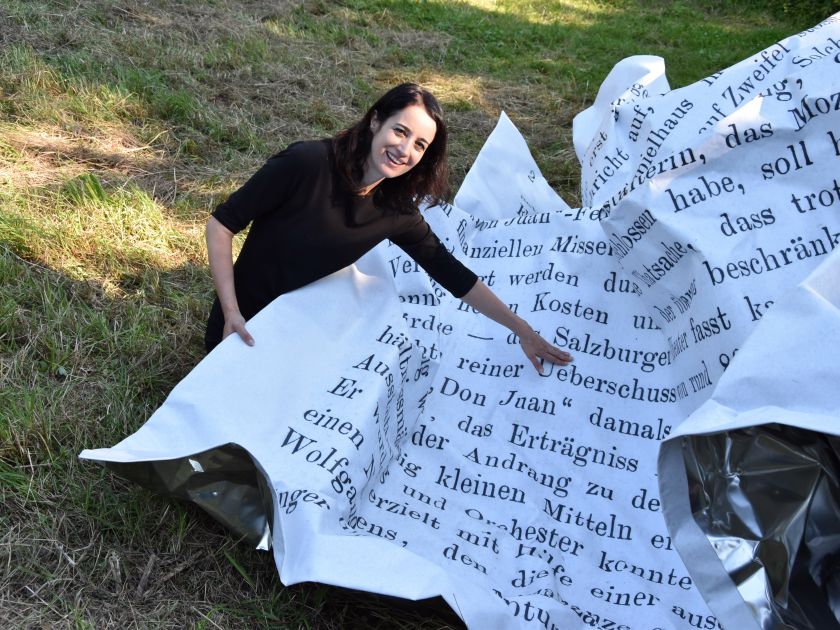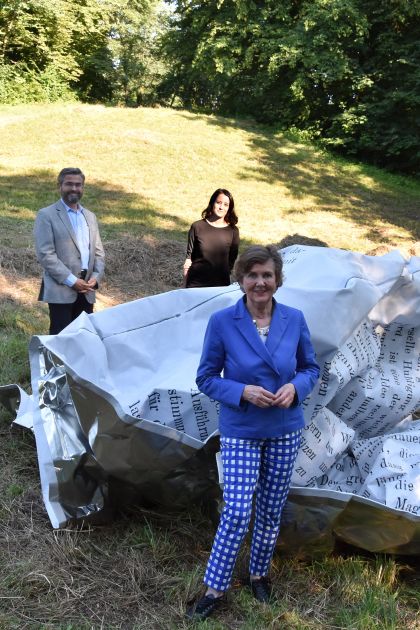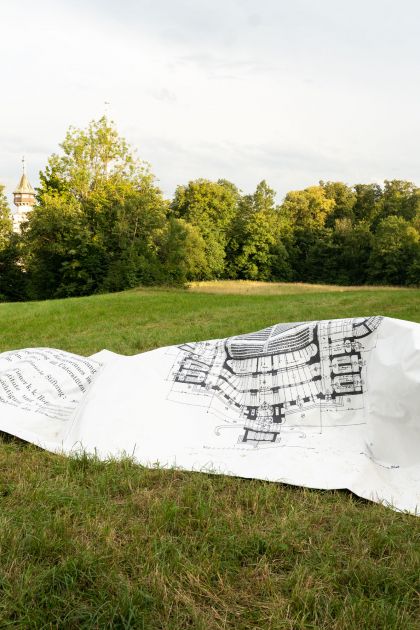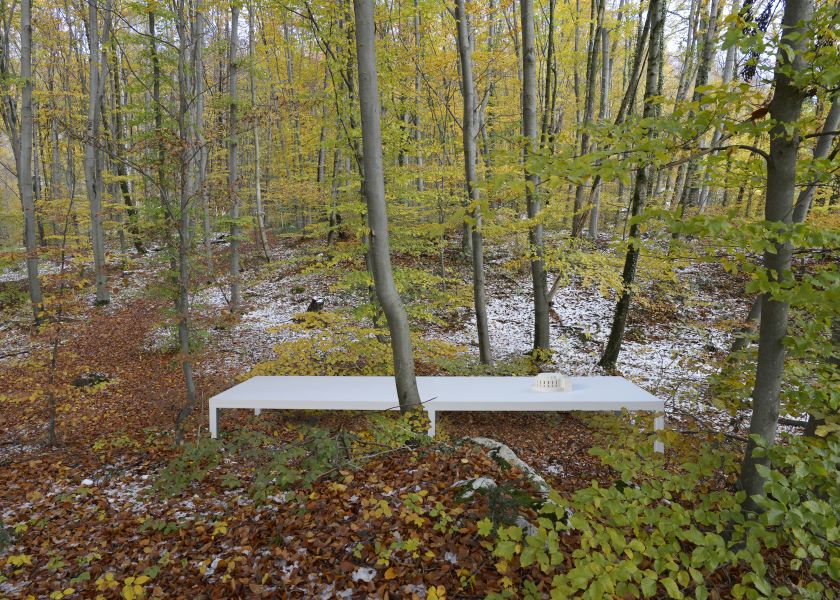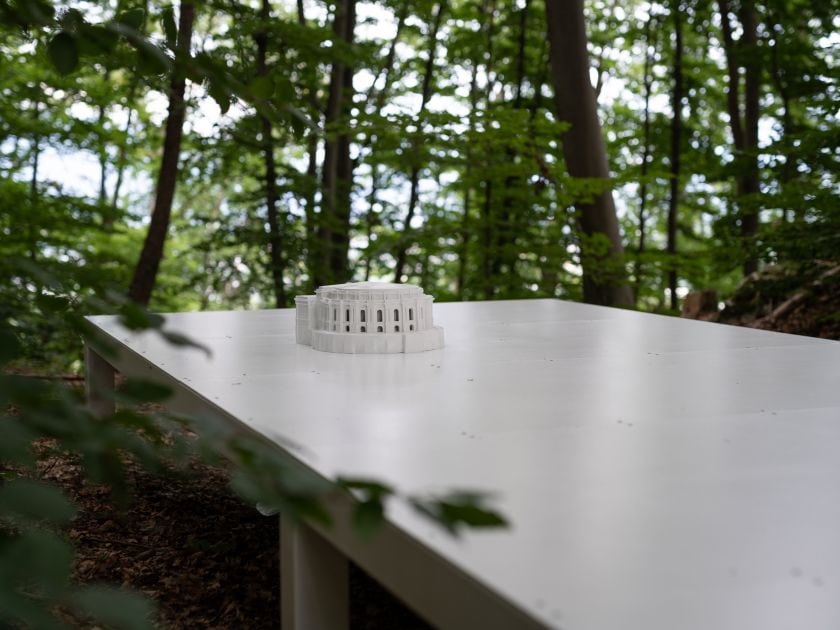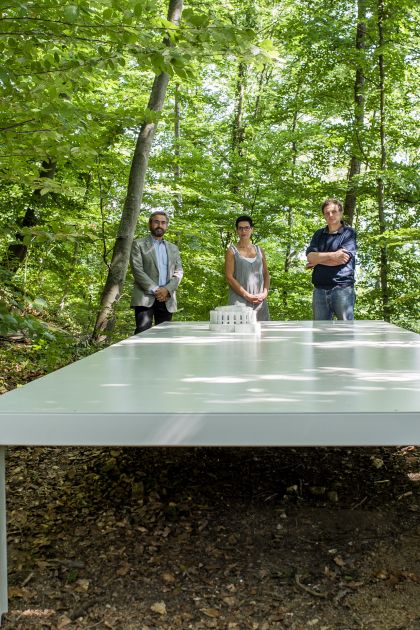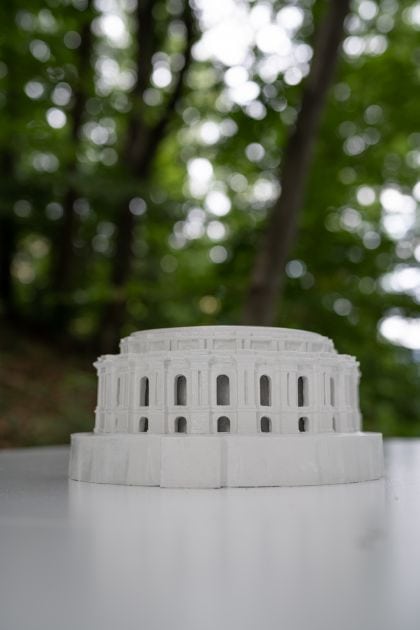The Dream of a Fairytale Temple
© Architekturmuseum der Technischen Universität Berlin in der Universitätsbibliothek
Artistic Interventions vis-à-vis Festival Theatres Never Built
Numerous plans for a festival theatre were mooted over the last 130 years and went unrealized. For the centenary of the Salzburg Festival, four of these unbuilt architectural designs were made visible in public spaces. Three of these artistic projects can be experienced and explored until the end of August 2021: Esther Stocker’s Three-Part Wrinkle Sculpture, conceived for the Mönchsberg; Werner Feiersinger’s Panel, 2019/20, an installation for the Kapuzinerberg; and Isa Rosenberger’s Portal Frame, created for the Mirabellgarten. The projects document how the festival theatres would have made their mark on the city or its surrounding countryside. (Concept: Norbert Mayr)
Video
Portal Frame for the Mirabell Gardens, 2019/20
Mirabell Gardens
Video
Podcast (in German only)
29. July 2020
Radio Play Isa Rosenberger 2020
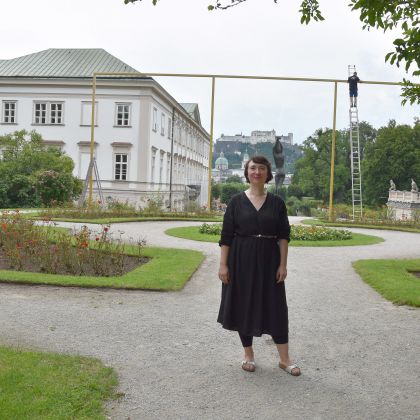
-
Radio Play Isa Rosenberger 202029. July 2020.

